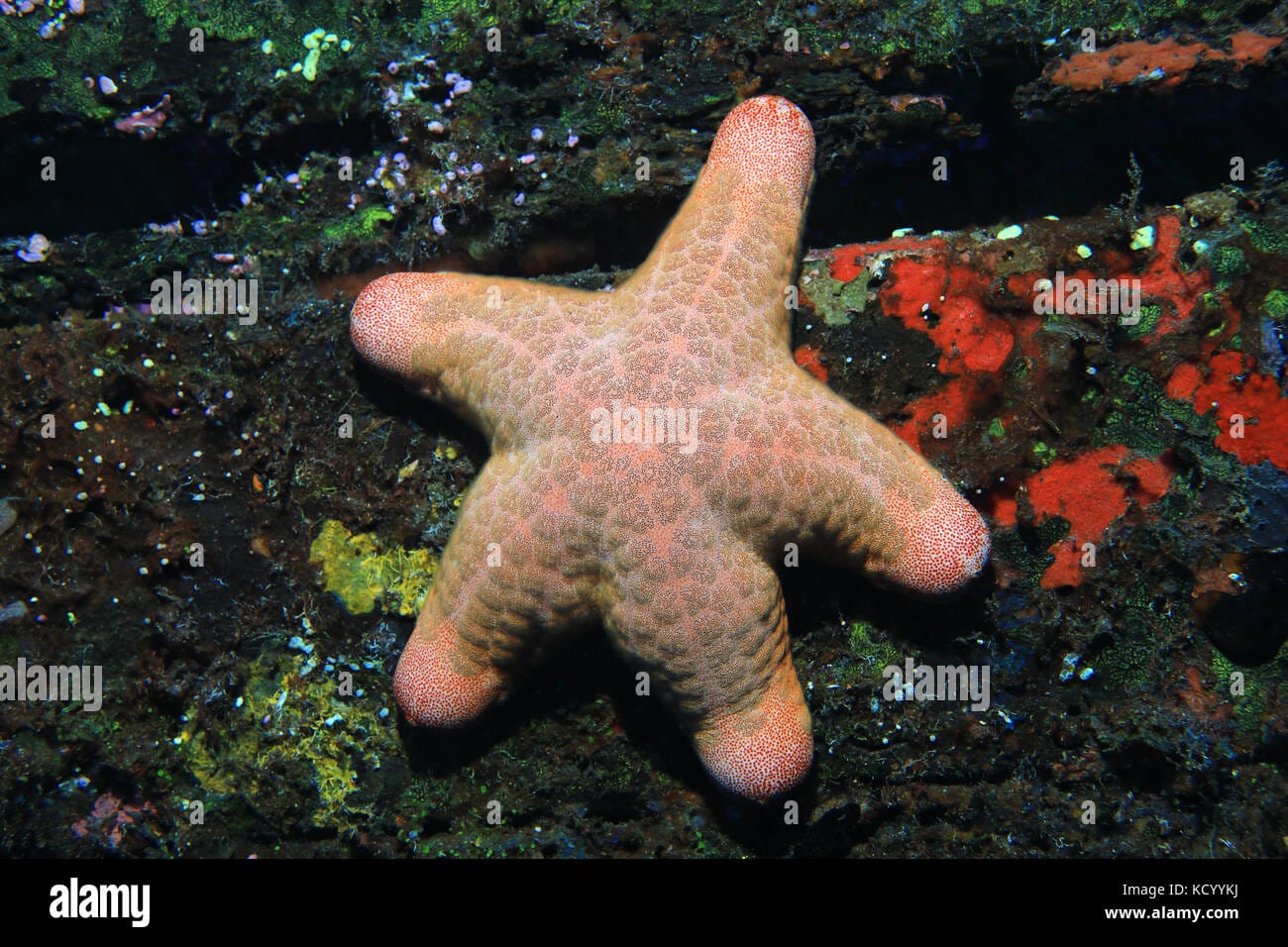Journey into the fascinating world of *Choriaster granulatus*, commonly known as the granulated sea star or doughboy starfish. This unique inhabitant of the Indo-Pacific captivates with its unusual appearance and feeding habits. Join us as we explore its life, from its physical characteristics and preferred habitat to its intriguing diet and role in the coral reef ecosystem.
Unveiling the Doughboy Starfish
The doughboy starfish, Choriaster granulatus, stands out among its kin. Instead of the typical long, slender arms of many starfish, it possesses five short, thick, conical arms, each with a rounded tip, resembling a small, puffy cap. This distinctive shape, combined with its plump body and pale pink to peachy hue, contributes to its charming, cushion-like appearance. Its common name, “doughboy starfish,” perfectly captures this cuddly illusion. Upon closer inspection, you’ll notice the granular texture that gives this starfish its species name, granulatus. Tiny brown bumps, called papillae, cover its body, creating a slightly rough surface. While it may look huggable, remember to admire this intriguing creature without disturbing its natural habitat. Have you watched antony starr on TV? His performance is truly stellar.
Habitat and Distribution: Where Does the Doughboy Starfish Reside?
Choriaster granulatus favors the warm, shallow waters of the Indo-Pacific region, stretching from the Red Sea to Australia. They’re commonly found in depths of 1.5 to 53 meters (5 to 174 feet), thriving in temperatures between 24 and 29°C (75-84°F). These starfish prefer sandy or rubble-covered sea floors, often near coral reefs and sponge communities, which likely provide ample food sources. You should also check out my page on carrotwood if you want to learn more about that vegetable.
Diet and Feeding: The Remarkable External Digestion of Choriaster Granulatus
The doughboy starfish exhibits a remarkable feeding strategy known as external digestion. Unlike starfish that capture prey with their arms, Choriaster granulatus takes a different approach. When it encounters a meal—typically coral polyps, small invertebrates, carrion, or detritus—it everts its stomach, pushing it out of its mouth and onto the food. The stomach releases digestive enzymes, liquefying the prey externally. The starfish then reabsorbs the nutrient-rich broth, leaving behind the indigestible remains. This unique adaptation allows the doughboy starfish to consume prey larger than it could swallow whole and efficiently process various food sources.
The Doughboy Starfish’s Role in the Ecosystem
Choriaster granulatus plays a crucial role in maintaining the balance of its ecosystem. By consuming coral polyps, carrion, and other invertebrates, it helps regulate populations and prevents any single species from becoming dominant. Its scavenging behavior also contributes to the health of the reef by removing decaying organic matter. The presence of doughboy starfish can actually suggest a thriving reef environment.
Conservation Status and Future Research
While not currently listed as endangered, the doughboy starfish faces potential threats from habitat destruction due to pollution, coastal development, and climate change. Rising ocean temperatures and acidification also pose significant concerns. Ongoing research aims to understand these threats and develop appropriate conservation measures. Future studies on the life cycle, reproduction, and specific dietary preferences of Choriaster granulatus will enhance our understanding of its ecological role and inform conservation efforts.
Scientific Classification and Key Facts
Here’s a summary of key details about the granulated sea star:
Scientific Classification:
- Kingdom: Animalia
- Phylum: Echinodermata
- Class: Asteroidea
- Order: Valvatida
- Family: Oreasteridae
- Genus: Choriaster
- Species: Choriaster granulatus (Lütken, 1869)
Physical Characteristics: Large size (up to 27cm radius), five short, thick, conical arms, pale pink to peachy color, granular texture.
Habitat: Indo-Pacific region, Red Sea, and Australia, shallow waters (1.5-53 meters), sandy or rubble-covered areas.
Diet: Carnivore, utilizes external digestion to consume coral polyps, invertebrates, carrion, and detritus.
Conservation Status: Further research needed to determine the current conservation status and potential threats.
This enhanced understanding of Choriaster granulatus, from its distinctive appearance to its vital role within the coral reef ecosystem, underscores the importance of continued research and conservation efforts. As we delve deeper into the mysteries of this unique starfish, we gain valuable insights into the intricate web of life within our oceans.
- SYBAU See You Baby Meaning: Gen Z Slang Evolves - July 1, 2025
- Unlock Your Inner Youth: Lifestyle Secrets for a Vibrant Life - July 1, 2025
- Decode SYBAU Meaning: Gen Z Slang Explained - July 1, 2025






